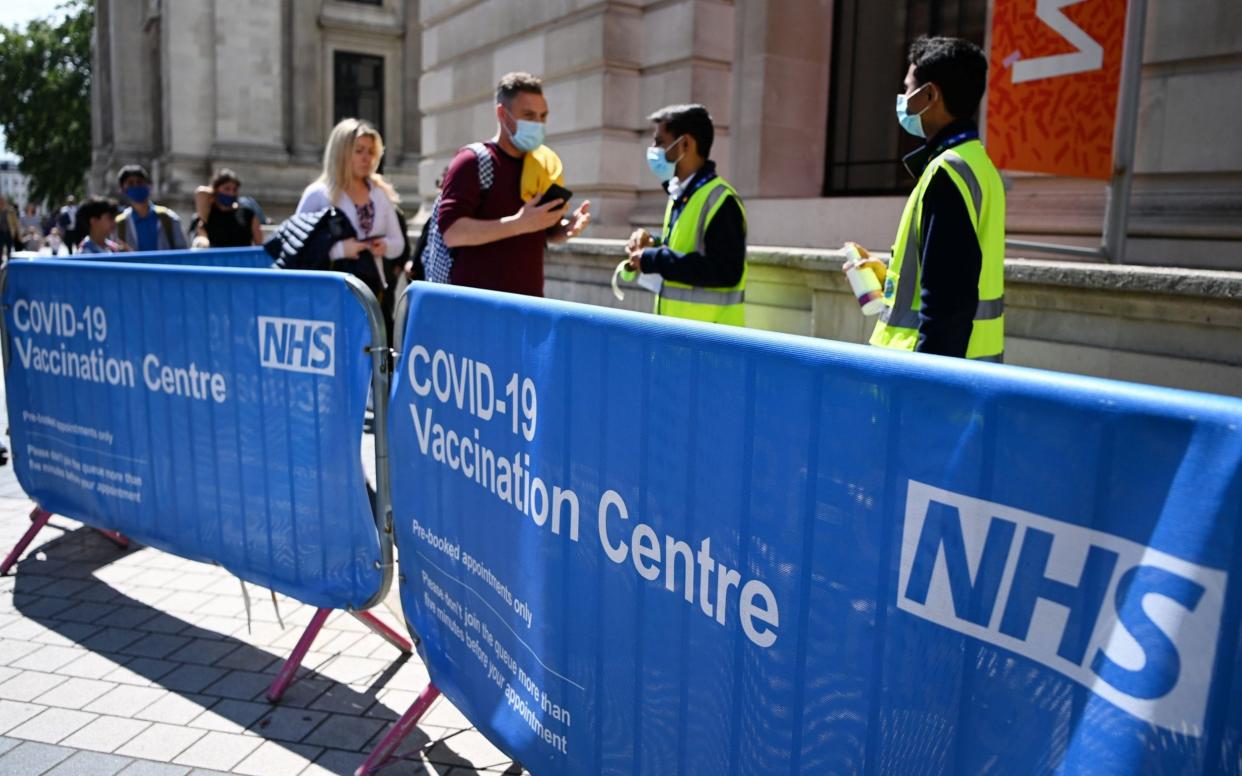Fully vaccinated and unvaccinated ‘can both transmit Covid’

People who are fully vaccinated have a similar viral load to the unvaccinated, suggesting both can transmit Covid.
New analysis by Public Health England (PHE) found little difference in how much virus was present in people who had been jabbed, leading to fears that the vaccines will not suppress spread as much as hoped.
Scientists believed the jabs would prevent transmission as well as protecting people against the disease by lowering viral replication.
Minutes of a Sage meeting from July 22, published on Friday, also show growing concern among government scientists that the delta variant causes a higher viral load than the alpha strain, even after vaccination.
"PCR cycle threshold (Ct) values have decreased as the delta variant has become dominant, which indicates that infected people have higher viral loads which may further increase the force of infection," the minutes say. "This may mean that there is limited vaccine effect against onward transmission for the delta variant."
The Ct value indicates how much amplification a swab needs in order for Covid to be detected – the fewer the amount of cycles, the more virus is present. PHE figures show that it took 17.8 cycles on average to detect the virus in unvaccinated people compared to 18 for the vaccinated.
"This means that whilst vaccination may reduce an individual's overall risk of becoming infected, once they are infected there is limited difference in viral load (and Ct values) between those who are vaccinated and unvaccinated," said the PHE report.
However, other experts said that the same viral load in unvaccinated and vaccinated individuals did not necessarily mean that they were equally infections.
Dr Muge Cevik, a clinical lecturer in infectious diseases and medical virology at St Andrews, said: "Even if viral load may be the same, vaccinated people who become infected are less likely to be infectious than unvaccinated because vaccines reduce virus shedding time, symptomatic infection, and the presence of immune response will suppress the viable virus."
Dr Meaghan Kall, an epidemiologist at PHE, also said the viral load figures may not be transferable to the general vaccinated population because the data was looking at people who had an unusual infection after the jab.
"Vaccines prevent many infections from occurring in the first place, so we can only compare vaccine 'breakthrough infections' versus unvaccinated infection," she said.

